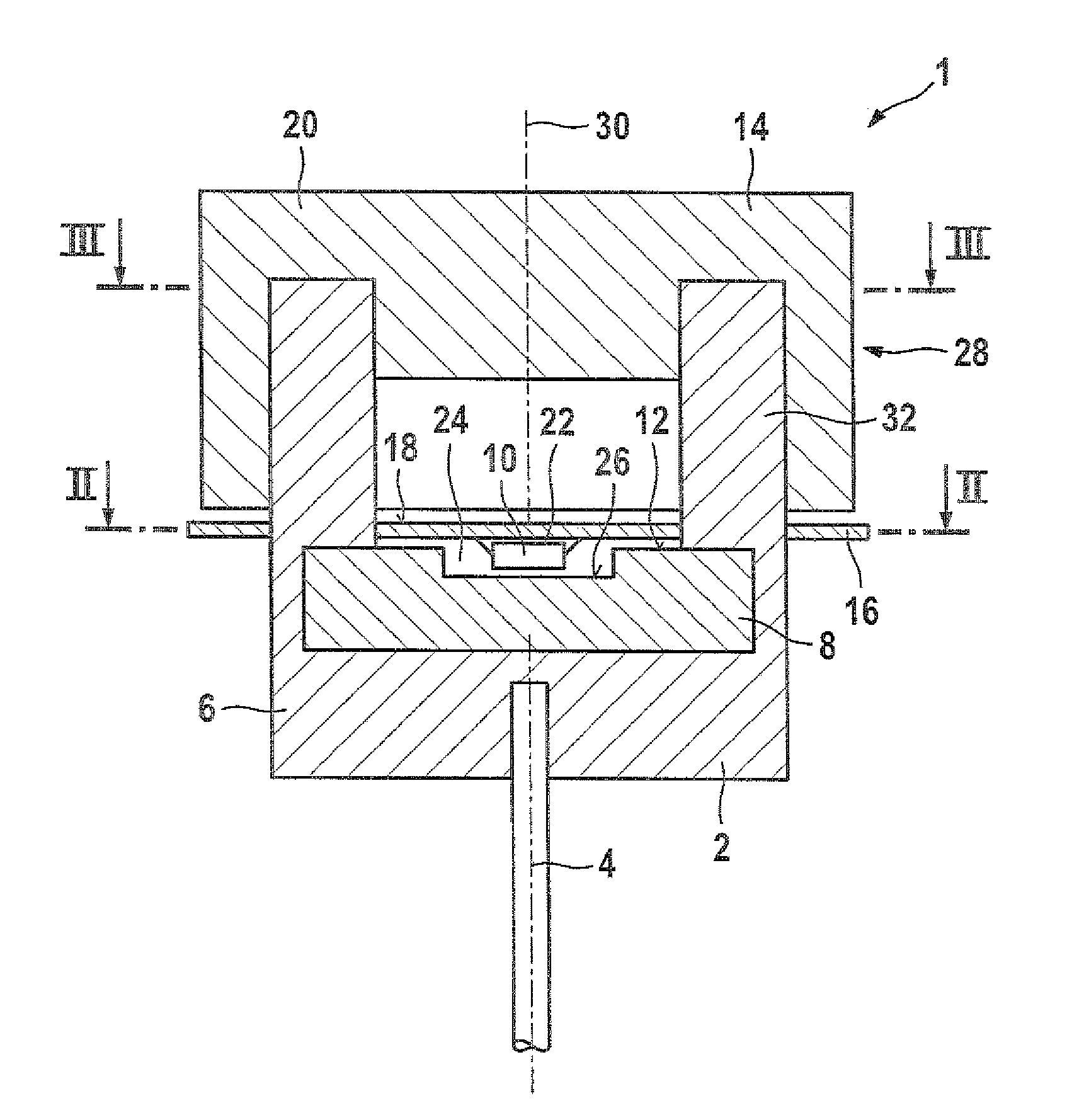Measuring system for contactless detection of a rotary angle, with a magnetic-field-sensitive element disposed in a recess of the magnet
a magnetic field sensitive element and measurement system technology, applied in the direction of measuring devices, instruments, devices using electric/magnetic means, etc., can solve the problems of large changes in voltage in the output signal of electronics, large magnets used in such applications, etc., to reduce the influence of extraneous fields and tolerances, the effect of reducing the resolution and linearity of the measurement signal
- Summary
- Abstract
- Description
- Claims
- Application Information
AI Technical Summary
Benefits of technology
Problems solved by technology
Method used
Image
Examples
Embodiment Construction
[0022]The preferred exemplary embodiment of a measuring system 1, shown in FIG. 1, for contactless detection of a rotational angle is used for instance to measure the actuation angle of an electronic accelerator pedal, not shown for reasons of scale, of an accelerator pedal module. Furthermore, a measuring system 1 of this kind can be used in various systems in the automotive field in which rotational angles have to be measured, such as in a throttle valve transducer, an accelerator pedal value transducer in a pedal module, a vehicle body suspension transducer, or an angle encoder of a windshield wiper drive mechanism.
[0023]The measuring system 1 includes a rotor 2, such as a disklike magnet holder 6 that is rotatable about an axis of rotation 4 and that is connected in a manner fixed against relative rotation to an accelerator pedal supported rotatably relative to a bearing block, and embedded in the magnet holder is a radially outer edge of a magnet 8, for instance of disklike sha...
PUM
 Login to View More
Login to View More Abstract
Description
Claims
Application Information
 Login to View More
Login to View More - R&D
- Intellectual Property
- Life Sciences
- Materials
- Tech Scout
- Unparalleled Data Quality
- Higher Quality Content
- 60% Fewer Hallucinations
Browse by: Latest US Patents, China's latest patents, Technical Efficacy Thesaurus, Application Domain, Technology Topic, Popular Technical Reports.
© 2025 PatSnap. All rights reserved.Legal|Privacy policy|Modern Slavery Act Transparency Statement|Sitemap|About US| Contact US: help@patsnap.com



